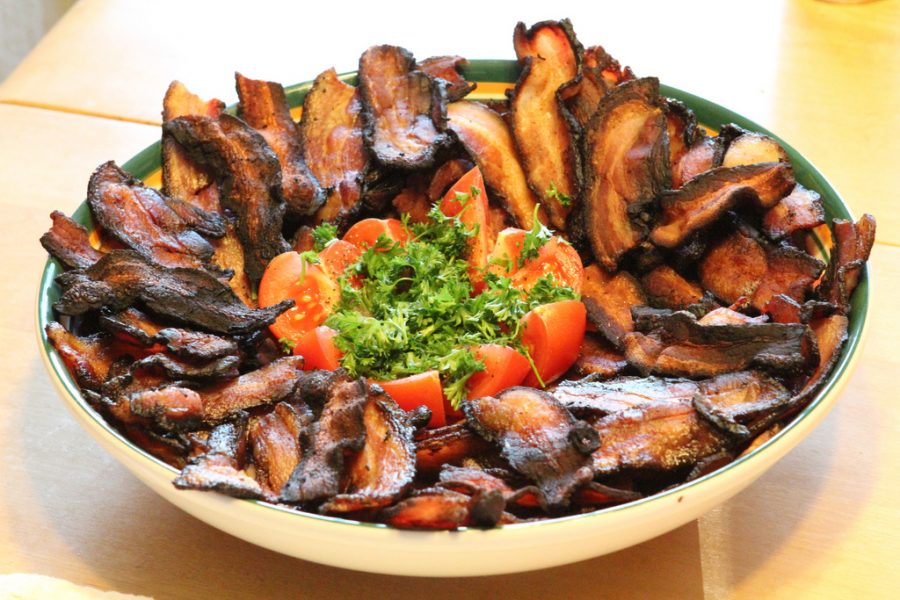
Eating Healthy typically means eating a lot of healthy vegetables, but that’s not necessarily the case with the Paleo and Atkins Diets.
Back to Bacon and the Paleolithic Period: A Manly Diet
Two Reporters Tell their Tales of Trying out the Atkins and Paleo Plans
![]() Loading ...
Loading ...
To prevent obesity and get into good shape, people often go on diet plans where some work more effectively than others. One diet plan is the Atkins Diet; a nutritional approach, focusing on controlling the levels of insulin in the body through a low-carbohydrate diet, according to medicalnewstoday.
By consuming large amounts of carbohydrates, insulin levels rise and fall rapidly. The body then goes into a energy storing process, storing the fat consumed and utilizing the carbohydrates for energy instead. Eating low concentrations of carbohydrates causes the human body to enter ketosis, a process where the body will use fat cells to fuel itself. While on the Atkins Diet, proteins and fats are the main source of consumption, causing weight loss.
Another diet is known as the Paleo Diet. Similar to the Atkins Diet, it attempts to use the method of minimizing insulin in the body by consuming fewer carbohydrates but is more open to the idea of eating carbohydrates. Created to address the problems our body has with digesting newer types of food (Dairy, grains, processed foods) that have been introduced in the last 10,000 years, it explores a more natural human diet. Emphasizing a large consumption of proteins, at least 1 gram per pound of body weight, and an even larger amount of fat, the Paleo Diet is better suited for physically active people whose bodies would better utilize the fats. Despite the carbs, the Paleo diet also encourages a lot of fruit and vegetable consumption. This is because humans naturally evolved alongside vegetables and fruits, making them much easier to digest than newer grains and processed foods.

